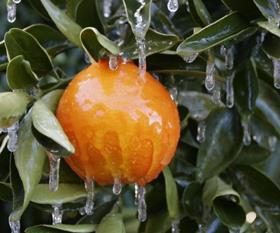
Citrus growers struggling with on-going drought in California’s San Joaquin Valley were presented with a Christmas “gift” at the beginning of December: one of the earliest hard freezes in the state’s history.
Temperatures averaged -5C for several hours during the night in the prime citrus-growing regions of the San Joaquin Valley for more than a week – and as low as -8C in the southern end of the valley.
Almost two months on and California growers are still trying to gauge damage to their crops. Thin-skinned fruit were hit the hardest while more hardy navels fared only somewhat better.
“The mandarins really got smoked, to the tune of at least half the crop and probably 40 per cent of the navels – and that can be considered a conservative estimate,” industry veteran Tom Wollenman told Fruitnet.
While the San Joaquin valley shivered, coastal California managed to avoid the worst of the December cold. Often referred to as District 2, the area north of Los Angeles near Ventura is known for producing some of the finest-quality lemons in the world. With global production of lemons curtailed by weather problems in South America, District 2 growers are anticipating strong demand for their fruit along with escalating Fob prices.
“District 2 is now kicking in and there will be plenty of fruit available for all markets for the next several months. But as we head into the summer, with the lack of supply from South America as well as Australia you can expect a very strong global lemon market.” Mark Golden of Umina Brothers, a major citrus exporter based in the Ventura area.
Largely due to the effects of the December freeze on San Joaquin Valley lemons, the USDA revised its 2013/14 California crop estimate downward by 5 per cent to 40m 18kg-cartons.



